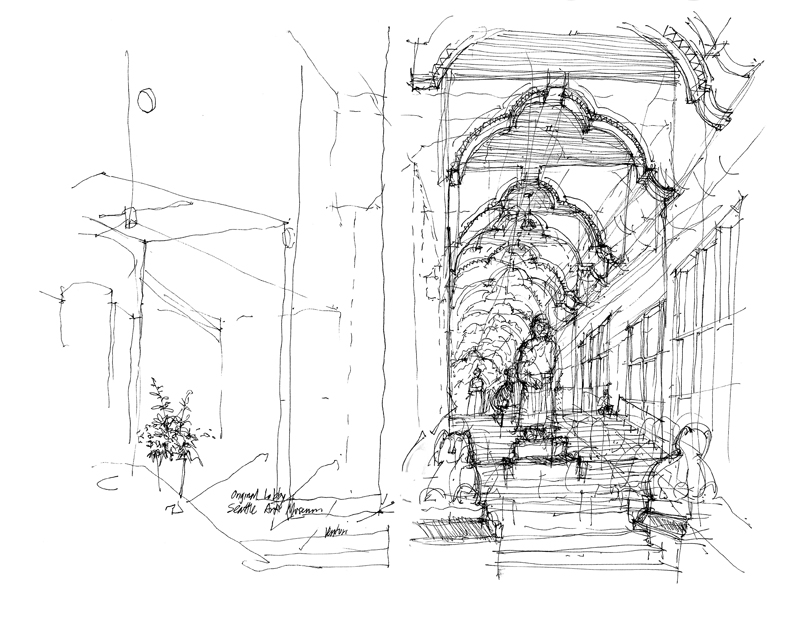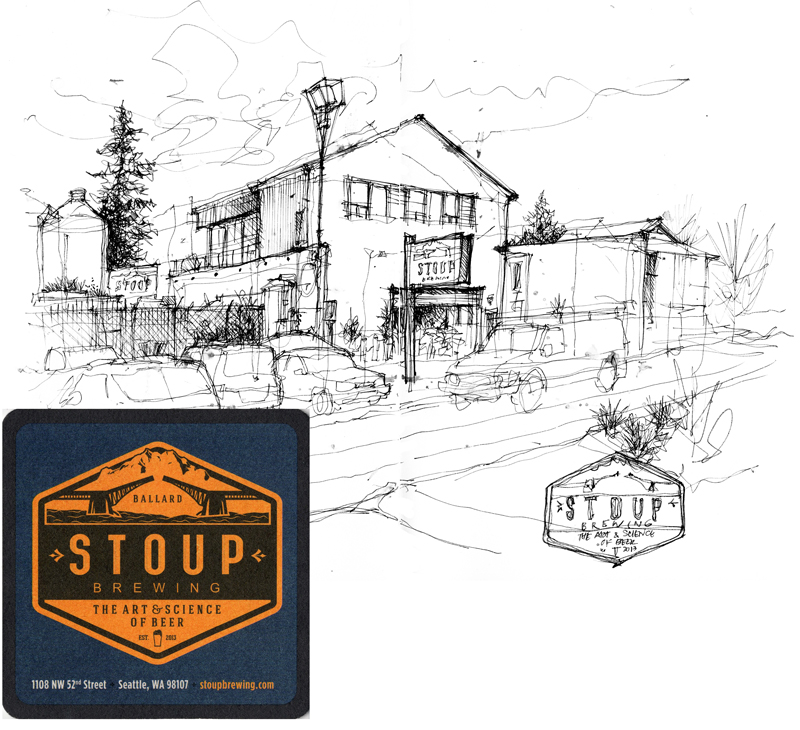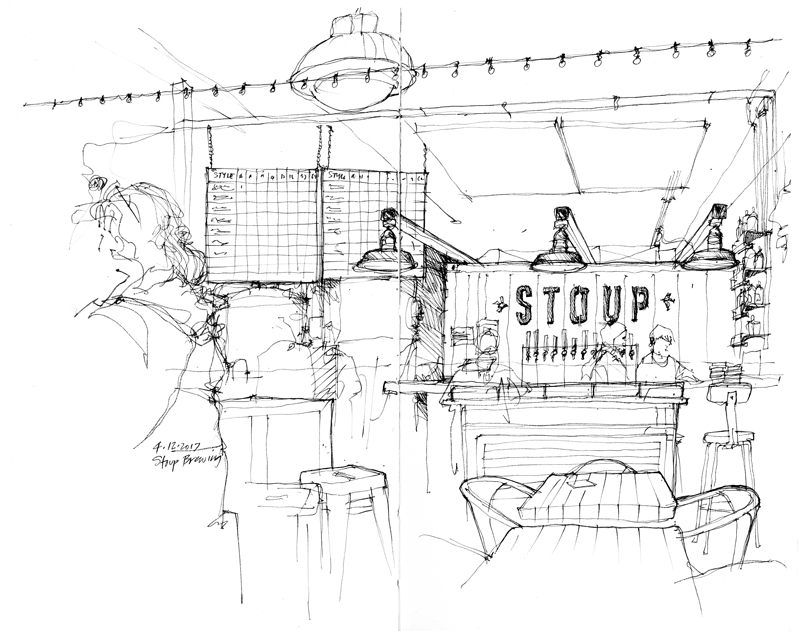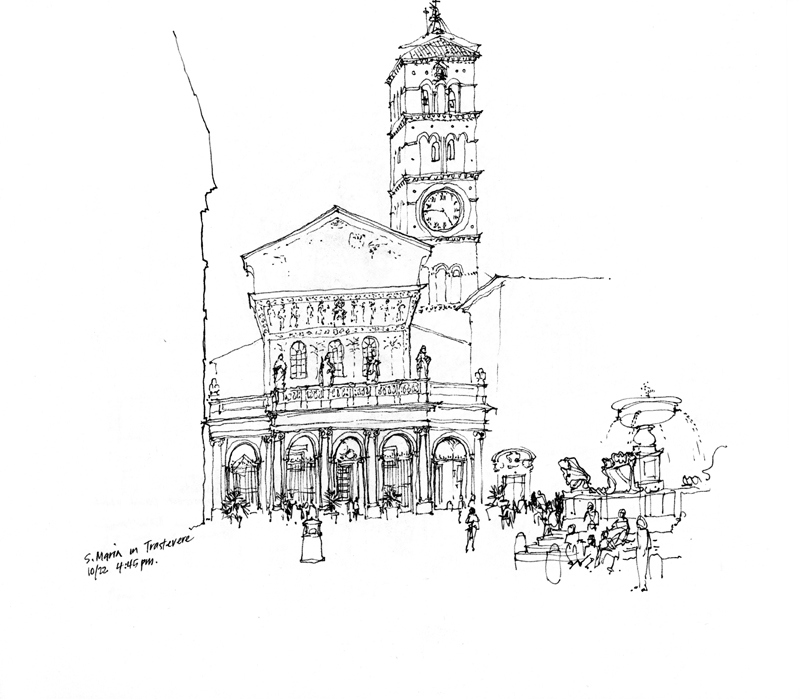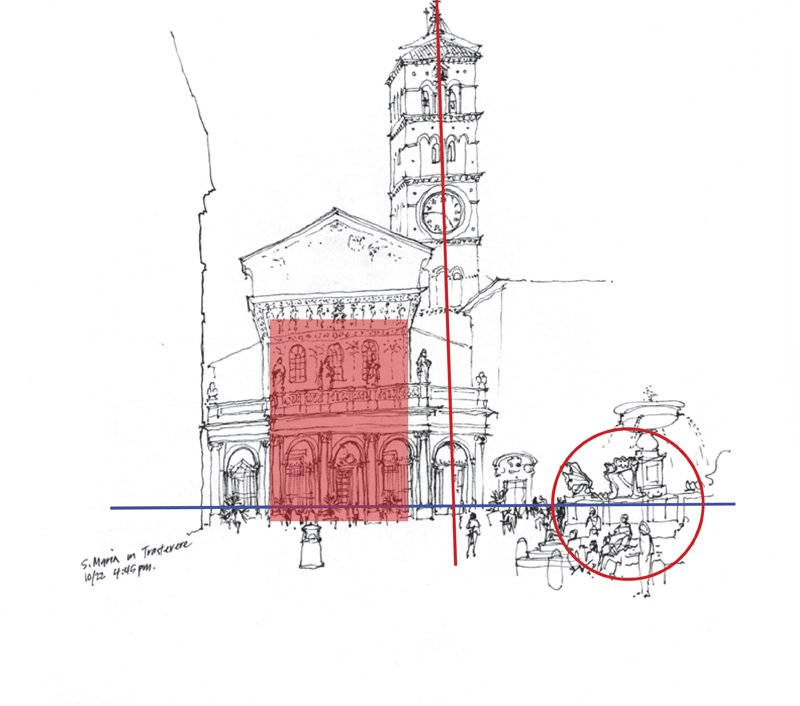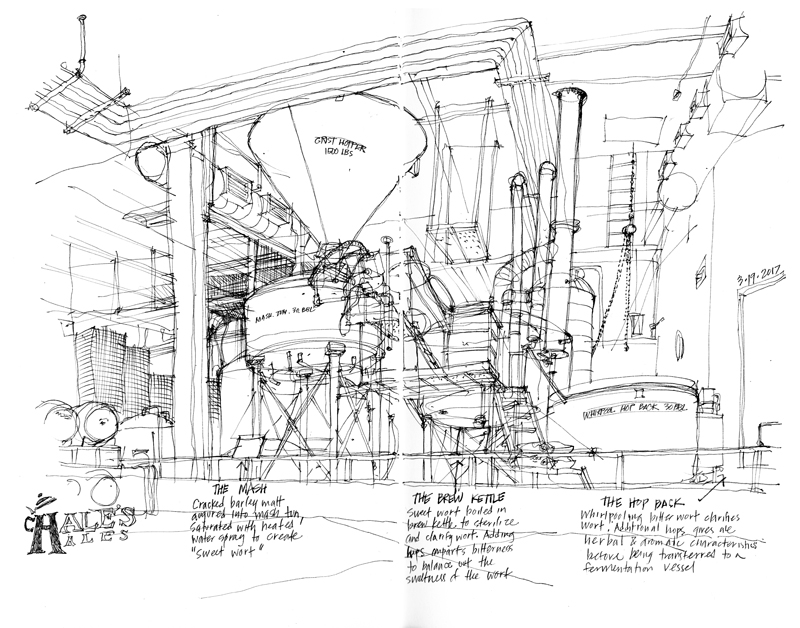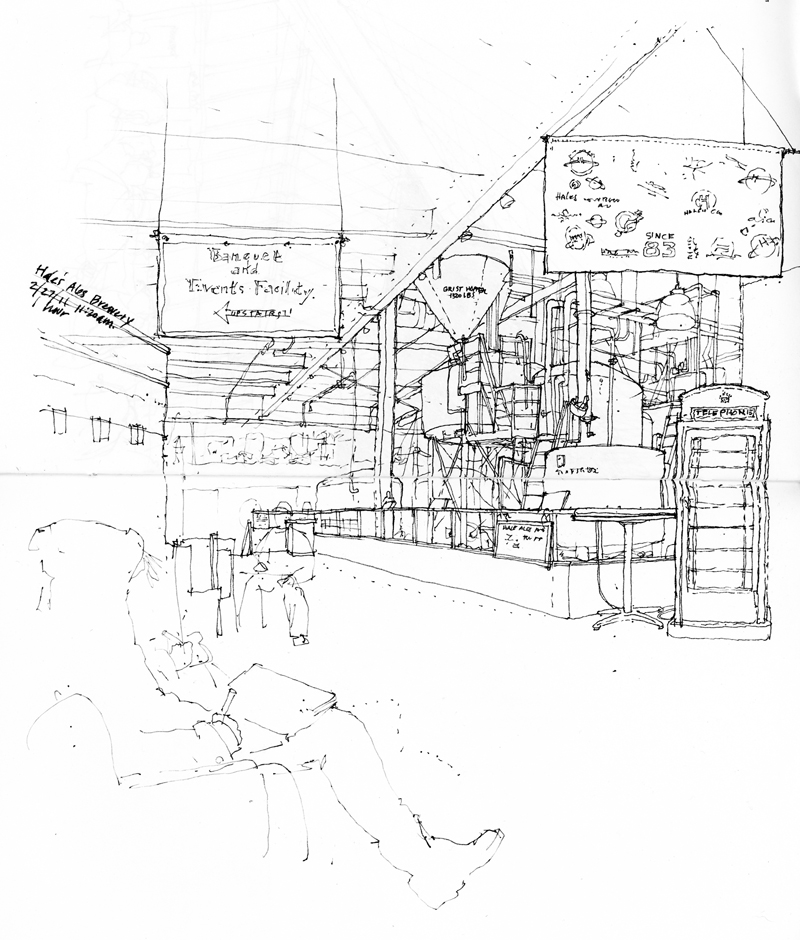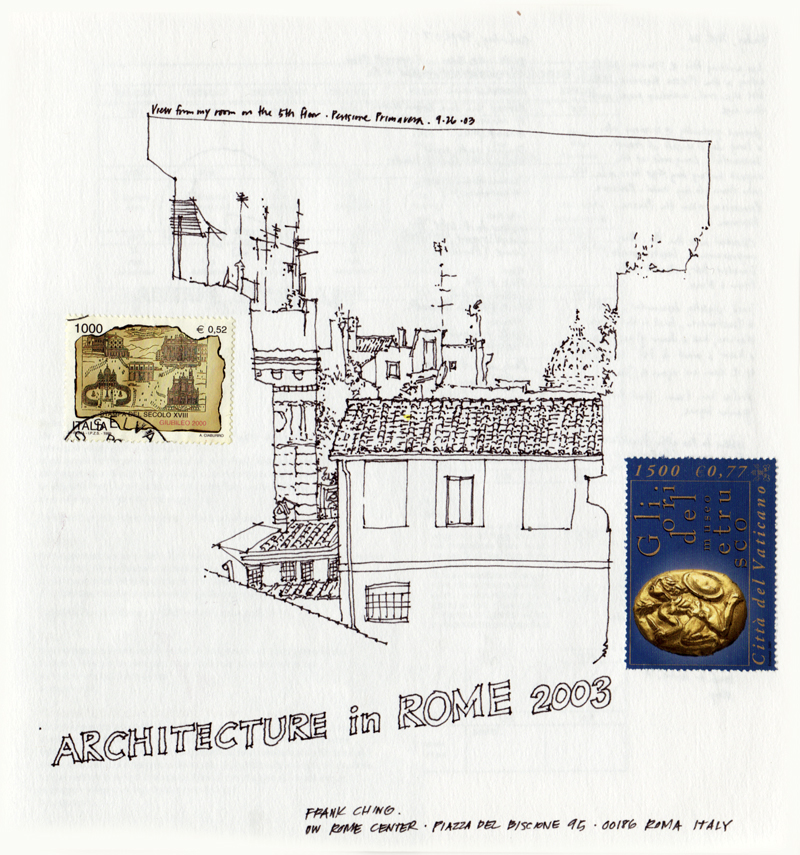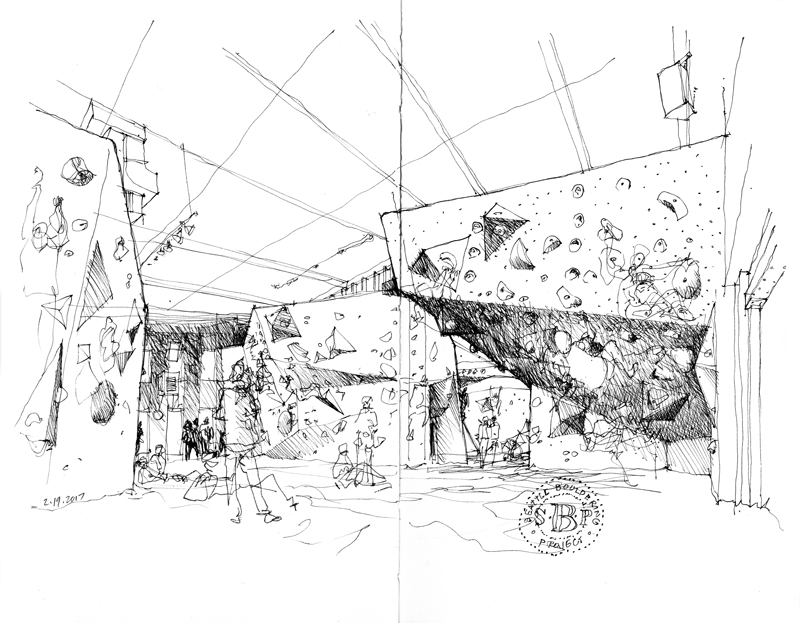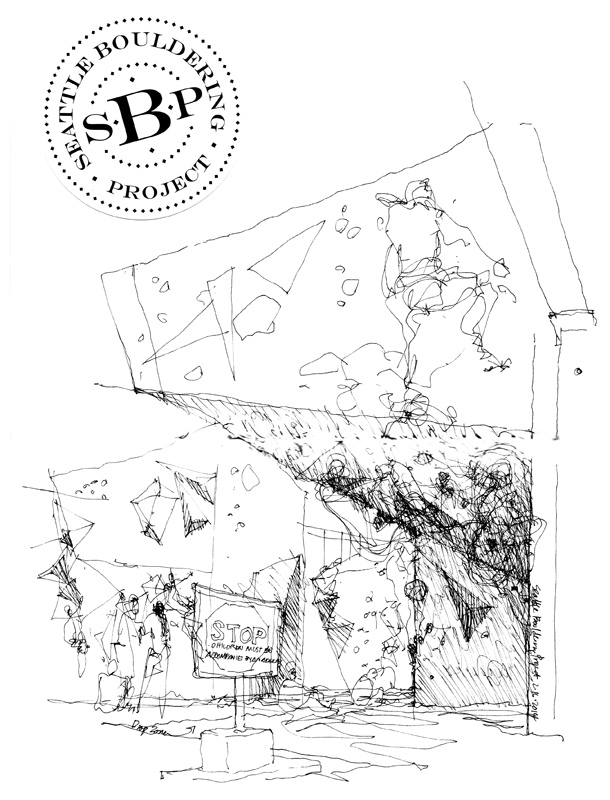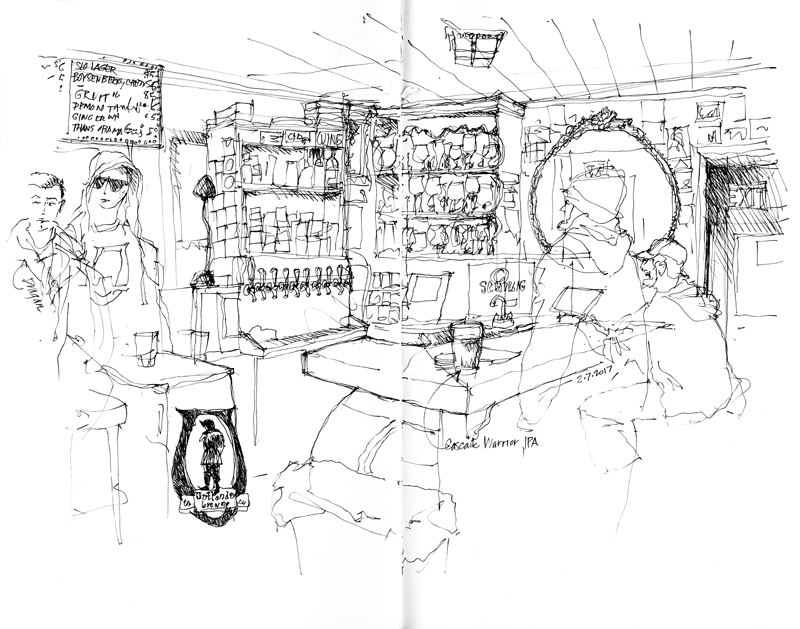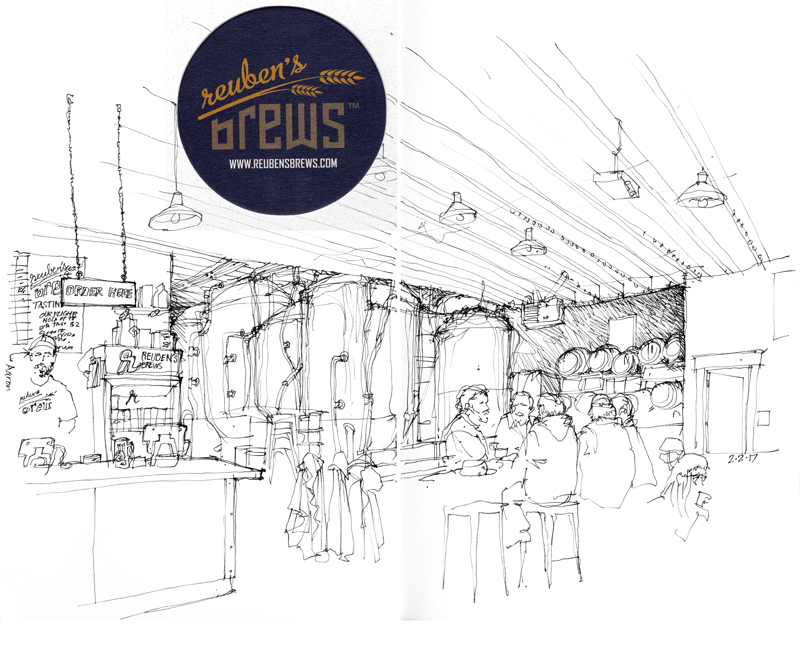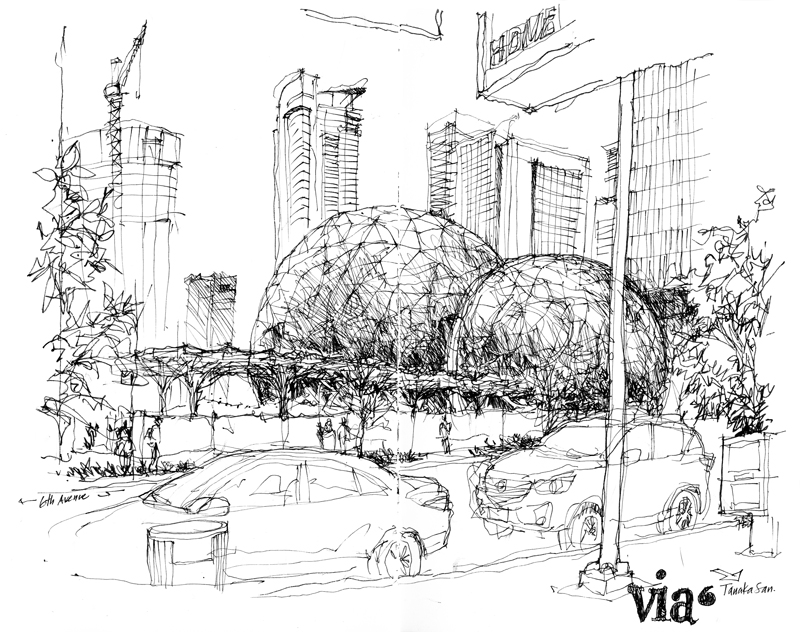 An ad-hoc group of Seattle Urban Sketchers met this past Friday at the Via6 apartment and retail complex, right across the street from these spheres being erected at the heart of Amazon’s urban campus. It’s been almost a year since I first drew these steel-and-glass orbs under construction (see sketch below.)
An ad-hoc group of Seattle Urban Sketchers met this past Friday at the Via6 apartment and retail complex, right across the street from these spheres being erected at the heart of Amazon’s urban campus. It’s been almost a year since I first drew these steel-and-glass orbs under construction (see sketch below.)
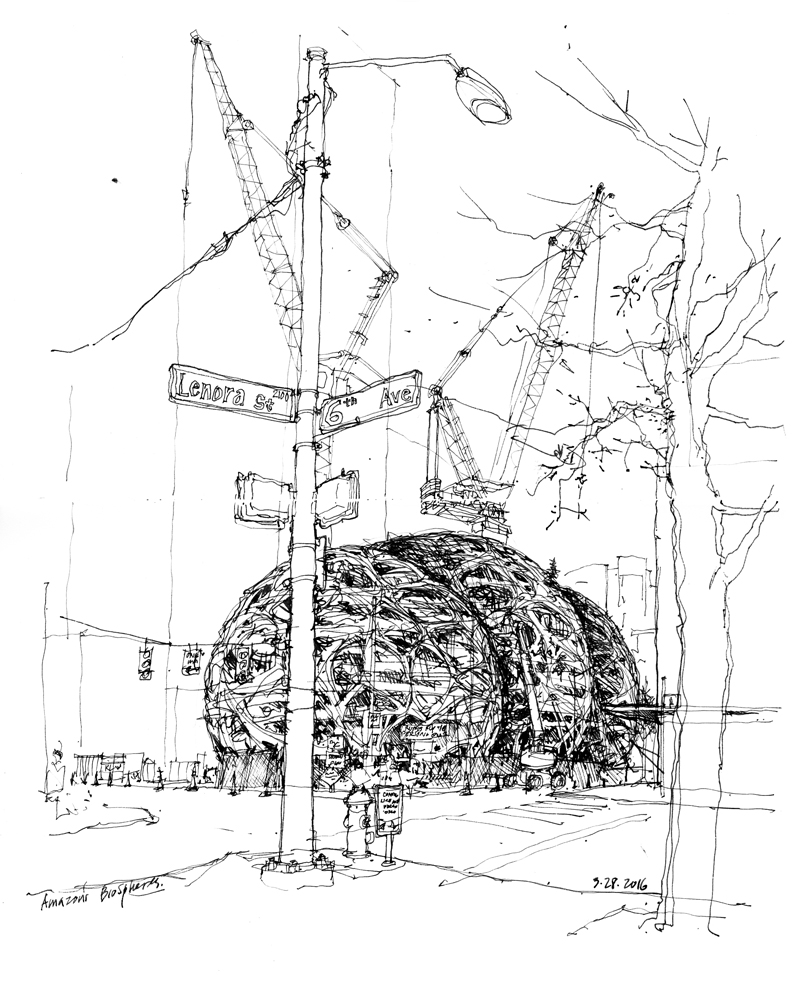
Even though some may find curves to be difficult to capture, spheres are actually quite easy to draw in perspective because they are always seen as circles; they only vary in size, depending on their scale and distance from us. The drawing of circles themselves, however, can be daunting. I find that using a smooth, continuous, lightly drawn stroke works better than a series of short, jerky strokes. The difficult part of drawing these spheres, then, is how to suggest the surface pattern of the steel- and-glass panels, and to convey the overall roundness of the orbs.
Drawing these spheres a second time brought to mind a question. I wonder why the clients or designers chose to use an organic framing pattern rather than an established prefabricated structure, such as Buckminster Fuller’s geodesic system.
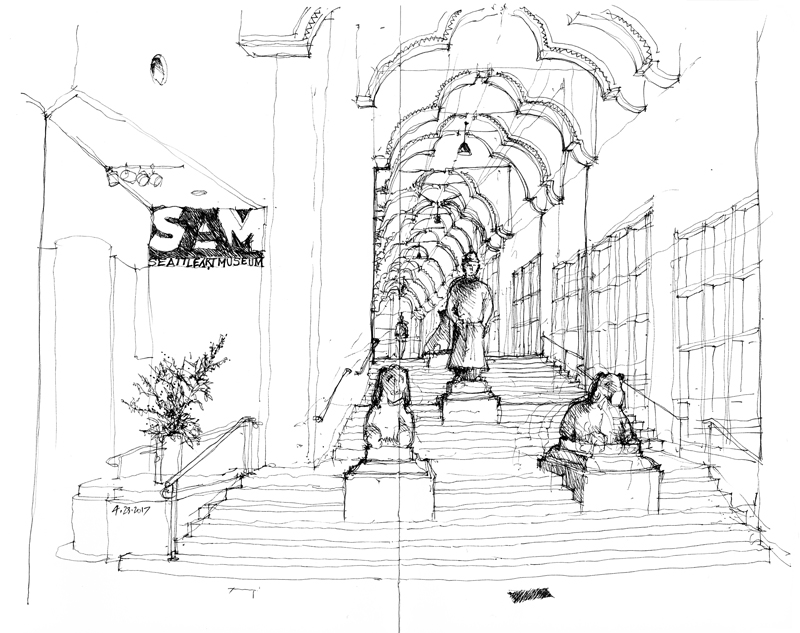 This is the original lobby of the Seattle Art Museum, designed by Venturi, Scott Brown & Associates in 1991, before the museum was expanded in 2006 in a design by Brad Cloepfil of Allied Works Architecture. A grand staircase traverses the rise from First to Second Avenues, mirrored on the outside with a similar set of stairs.
This is the original lobby of the Seattle Art Museum, designed by Venturi, Scott Brown & Associates in 1991, before the museum was expanded in 2006 in a design by Brad Cloepfil of Allied Works Architecture. A grand staircase traverses the rise from First to Second Avenues, mirrored on the outside with a similar set of stairs.
